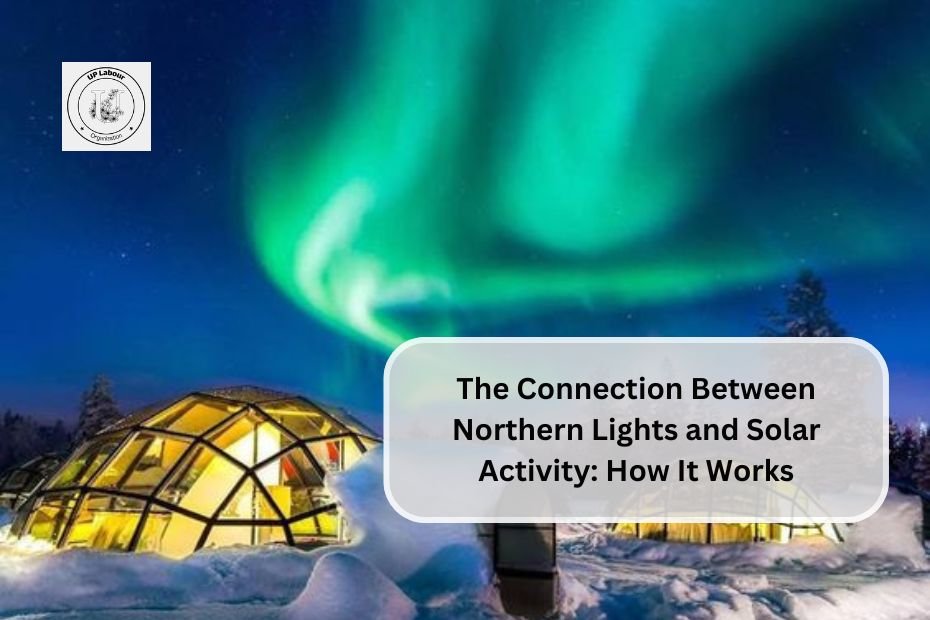The Northern Lights, or aurora borealis, are a captivating natural phenomenon resulting from the interaction between solar activity and Earth’s magnetic field. Understanding this connection is essential for appreciating how solar events influence the intensity and visibility of auroras. Here’s a detailed look at how it works.
The Science Behind Auroras
Solar Activity and the Solar Wind
Auroras are primarily caused by charged particles emitted by the sun, known as the solar wind. This stream of particles, which includes electrons and protons, travels through space and interacts with Earth’s magnetosphere—the region surrounding our planet that is influenced by its magnetic field. When these solar particles collide with gases in Earth’s atmosphere, they produce the beautiful light displays characteristic of auroras.
Geomagnetic Storms
Geomagnetic storms occur when there are significant disturbances in Earth’s magnetosphere, often triggered by solar events such as Coronal Mass Ejections (CMEs) and high-speed solar wind streams from coronal holes.
- Coronal Mass Ejections (CMEs): These are massive bursts of solar wind and magnetic fields rising above the solar corona or being released into space. When a CME reaches Earth, it can cause intense geomagnetic storms that enhance auroral activity, allowing the lights to be visible at lower latitudes than usual.
- Coronal Holes: These areas on the sun’s surface allow high-speed solar winds to escape into space. When these winds reach Earth, they can also trigger geomagnetic storms, resulting in auroras.
Electron Precipitation
The process of auroras begins with electron precipitation, where electrons trapped in Earth’s magnetosphere are released due to interactions with plasma waves. These electrons then travel down magnetic field lines into the upper atmosphere (thermosphere), where they collide with atmospheric gases like oxygen and nitrogen. This collision excites the gas molecules, leading to the emission of light that we see as auroras.
The Role of Solar Cycles
Solar activity follows an approximately 11-year cycle characterized by varying numbers of sunspots—dark spots on the sun’s surface associated with increased solar activity. During periods of high sunspot activity (solar maximum), there is a greater likelihood of CMEs and increased solar wind, leading to more frequent and intense auroras. Conversely, during solar minimum, auroral activity tends to decrease.
Climate Change and Its Indirect Effects
While climate change does not directly impact the formation of Northern Lights, it can influence their visibility through atmospheric changes:
- Increased Cloud Cover: As global temperatures rise due to climate change, weather patterns become more unpredictable. Increased storm intensity may lead to more cloud cover in regions where auroras are typically visible, obstructing views.
- Changes in Atmospheric Conditions: Climate change can alter humidity and temperature profiles in the atmosphere, potentially affecting how light from auroras is perceived.
- Ozone Layer Depletion: Recent research has indicated that auroras can contribute to mesospheric ozone layer depletion through electron precipitation, which may have implications for climate change itself . This depletion could further influence atmospheric conditions that affect aurora visibility.
Conclusion
The connection between Northern Lights and solar activity is a fascinating interplay of cosmic forces that creates one of nature’s most stunning displays. Understanding how solar wind, geomagnetic storms, and electron precipitation contribute to this phenomenon enhances our appreciation for it. While climate change poses challenges that could affect our ability to view these lights, ongoing research continues to shed light on these complex interactions. As we advance our understanding of both solar activity and environmental changes, we can better prepare for future opportunities to witness the awe-inspiring beauty of the aurora borealis.

